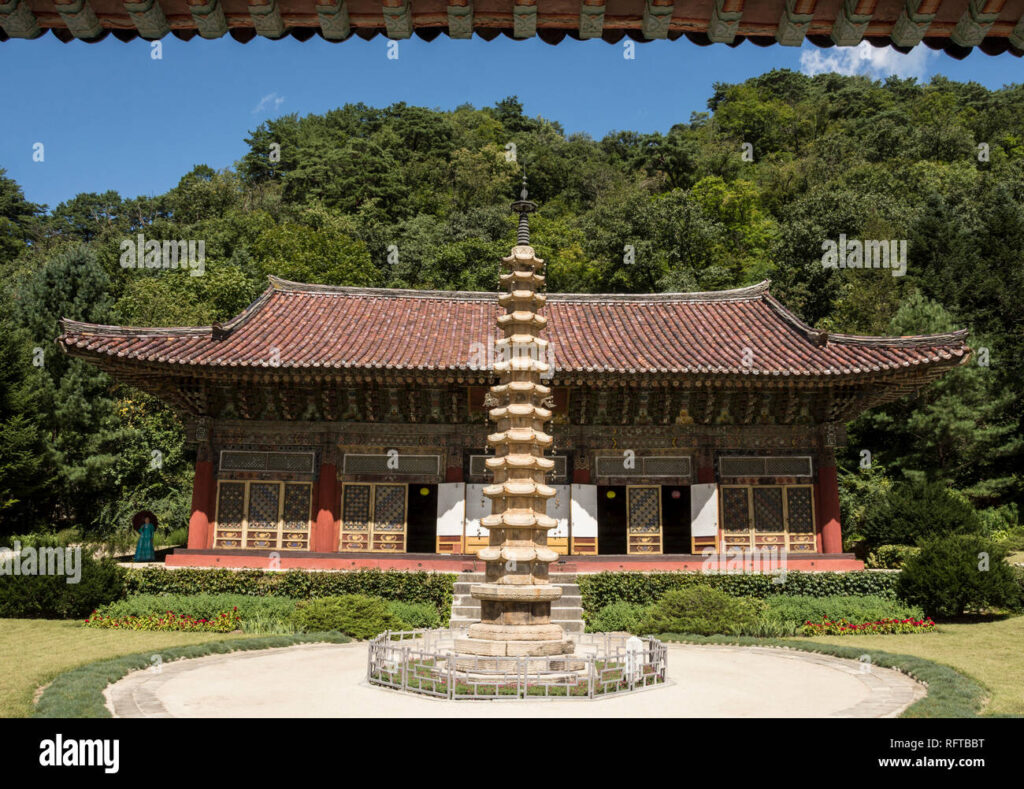Introduction
Nestled in the beautiful Mount Myohyang in North Korea is the magnificent Pohyon Temple. Pohyon Temple is a Buddhist temple that dates back to the 10th century and is a major draw for locals and tourists alike. It is one of the few remaining ancient temples in North Korea and is the most important temple of the Korean Buddhist sect called Jogye. Pohyon Temple has a long and fascinating history and is one of the most important sites in the country for those interested in Buddhism and Korean culture.
History of Pohyon Temple
Pohyon Temple was founded in 1042 by the great monk Hyecho, who was a disciple of the Buddhist master Uicheon. The temple was built on the site of an old temple that had been destroyed by war. Over the centuries, it has been rebuilt and expanded several times, most recently in the 19th century. Pohyon Temple is believed to be the oldest temple in North Korea and is often referred to as the “jewel of North Korean Buddhism”.
The temple’s main building is called the “Main Hall” and is a three-story structure with a large copper-plated Buddha statue in the center. This statue is said to be the oldest and most important Buddha statue in the country. The Main Hall is surrounded by several smaller buildings and shrines, including a bell tower and a library.
The complex also includes several pavilions, gardens, and a pond. Pohyon Temple is a popular destination for pilgrims, who come to pay homage to the main Buddha statue and to pray for good fortune.
Architecture of Pohyon Temple
Pohyon Temple is a unique example of Korean Buddhist architecture. The temple complex consists of the Main Hall and several other buildings and shrines. The temple is constructed in traditional Korean style, with tiled roofs and stone walls. The Main Hall is the most impressive structure in the complex and is decorated with colorful murals and sculptures.
The walls of the Main Hall are painted in traditional Korean colors, and the ceilings are decorated with intricate carvings. The main Buddha statue is placed in the center of a large platform, surrounded by smaller statues and sculptures.
The other buildings in the complex include a bell tower, a library, and several pavilions. The bell tower is an octagonal structure and is the tallest building in the complex.
Significance of Pohyon Temple
Pohyon Temple is an important symbol of Korean Buddhist culture and is a major site of pilgrimage for Buddhists. It is also a popular tourist destination, as it is one of the few remaining ancient temples in North Korea.
The temple is a UNESCO World Heritage Site and has been designated as a “Cultural Monument of National Significance” by the North Korean government. It is also home to several important Buddhist artifacts and is a major center for Buddhist study and practice.
Conclusion
Pohyon Temple is a magnificent example of Korean Buddhist architecture and is an important symbol of Korean culture and history. It is an important site of pilgrimage for Buddhists and is a popular tourist destination for those interested in North Korean history and culture. Pohyon Temple is a UNESCO World Heritage Site and is one of the few remaining ancient temples in North Korea.

